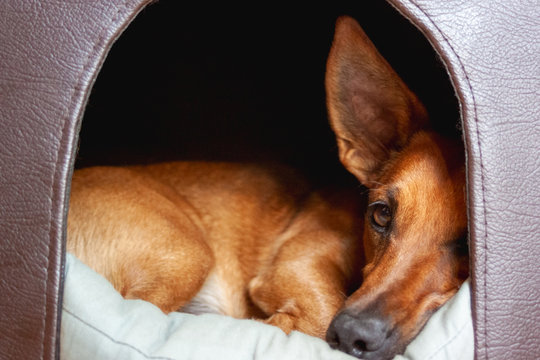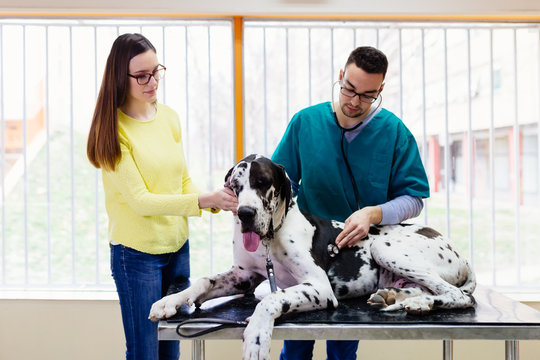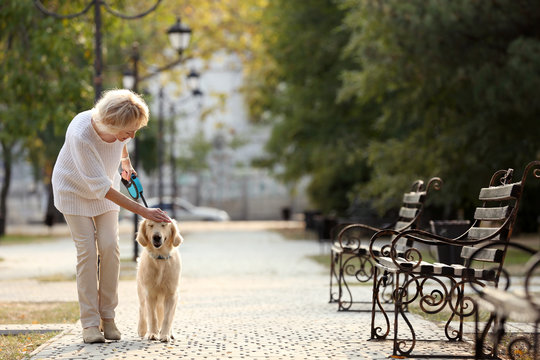Are you ready to take the plunge into dog ownership? If you’re thinking “I want to have a dog,” it’s important to be prepared for the responsibilities that come with it. In this comprehensive guide, we’ll cover everything you need to know to make an informed decision about getting a dog. From assessing your readiness to choosing the right breed, we’ll help you navigate the process of preparing your home for your new furry friend. Whether you’re a first-time dog owner or an experienced dog parent, this guide is here to help you on your journey to becoming a responsible and loving dog owner.
Preparing to Get a Dog
Preparing to bring a furry friend into your home is an exciting time, but it’s important to assess your readiness for the commitment. Owning a dog is a long-term responsibility that requires dedication, time, and resources. Here are some essential factors to consider before getting a dog:
Assessing Your Readiness for a Dog
Time Commitment
Dogs require daily exercise, playtime, and attention. Make sure you have the time to dedicate to your new furry friend. Consider your work schedule, social life, and other commitments. If you’re away from home for long periods, consider hiring a dog walker or pet sitter.
Budget Allocation
Owning a dog can be expensive. In addition to the initial costs of adoption or purchase, you will need to budget for food, toys, bedding, grooming, and veterinary care. Make sure you have the budget to provide for your dog’s needs. Consider setting up a separate savings account for unexpected expenses.
Living Situation
Make sure your living situation is suitable for a dog. If you’re in an apartment, check that your building allows dogs and has appropriate facilities for them. If you have a yard, make sure it’s secure and safe for your dog. Consider the size of your home and whether it can accommodate a larger dog breed.
Family Situation
If you have children or other pets, make sure they’re ready for a new dog. It’s important to introduce your new dog to the family slowly and carefully. If you have other pets, consider their temperament around dogs. If you have children, teach them how to interact with dogs safely and gently.
By taking the time to assess your readiness for a dog, you can ensure a smooth transition for both you and your new furry friend.
Choosing the Right Breed of Dog
Choosing the right breed of dog is crucial to ensuring a happy and healthy life for both you and your new furry friend. With so many breeds to choose from, it’s important to do your research before making a decision. Here are some factors to consider when choosing a breed of dog:
Energy Level
Different breeds have different energy levels. If you’re an active person or enjoy outdoor activities, consider a high-energy breed such as a Border Collie, Australian Shepherd, or Siberian Husky. If you prefer a more laid-back lifestyle, a lower-energy breed like a Bulldog, Basset Hound, or Shih Tzu may be a better fit.
Size
Dogs come in all shapes and sizes, from tiny Chihuahuas to giant Great Danes. Make sure to choose a breed that fits your living situation and lifestyle. If you live in a small apartment, a smaller breed such as a Pomeranian, French Bulldog, or Boston Terrier may be a better fit. If you have a bigger living space and enjoy larger dogs, consider a breed such as a Golden Retriever, Labrador Retriever, or German Shepherd.
Temperament
Different breeds have different temperaments, so it’s important to choose a breed that matches your personality and lifestyle. Some breeds are independent and require less attention, while others are more affectionate and crave attention. Some breeds are better with children, while others are better with adults. Do your research and choose a breed whose temperament aligns with your lifestyle. Some examples of breeds with different temperaments include Labrador Retrievers, Pugs, Boxers, and Beagles.
Health Concerns
Different breeds are prone to different health concerns, so it’s important to choose a breed that’s healthy and has minimal health issues. Some breeds have a higher risk of developing certain health conditions, such as hip dysplasia, eye problems, or skin allergies. Research the breeds you’re interested in and talk to a veterinarian to understand their potential health concerns. Some breeds that are known for having minimal health issues include Australian Cattle Dogs, Border Terriers, and Bichon Frises.
By taking these factors into consideration, you can choose a breed that’s a good fit for your lifestyle and personality, and ensure a happy and healthy life for both you and your furry friend.
Preparing Your Home for a New Dog
Preparing your home for a new dog is essential to ensuring a smooth transition for both you and your new furry friend. Here are some things that you can do to prepare your home:
Create a Safe and Comfortable Space for Your Dog
Dogs need a safe and comfortable space to call their own. Creating a designated space for your dog can help them feel secure and relaxed. Here are a few things to consider:
- Choose a space that is quiet and away from high traffic areas in your home. Dogs need a peaceful environment to rest and relax.
- Provide your dog with a comfortable bed. There are many options available, including orthopedic beds for dogs with joint issues.
- Give your dog access to water at all times. Consider using a spill-proof bowl to prevent any messes.
Puppy-Proof Your Home
Puppies are curious and love to explore. It’s important to puppy-proof your home to ensure their safety. Here are a few tips:
- Keep hazardous items out of reach. This includes cleaning supplies, medications, and small objects that could be swallowed.
- Secure cabinets and drawers to prevent your puppy from getting into places they shouldn’t be.
- Use baby gates to block off areas of your home that are off-limits to your puppy.
Stock Up on Supplies
Make sure you have all the supplies you need before bringing your new dog home. Here are some things to consider:
- Food: Choose a high-quality dog food that meets your dog’s nutritional needs.
- Bowls: Invest in two sturdy, non-slip bowls – one for food and one for water.
- Toys: Provide your dog with a variety of toys to keep them mentally stimulated and entertained.
- Leash and Collar: Choose a well-fitting collar and leash for your dog’s safety.
- Crate: Consider purchasing a crate for your dog to use as a safe space or for travel.
By taking the time to prepare your home for your new dog, you can help ensure a smooth transition and a happy life together.
Adopting or Buying a Dog
When you decide to bring a new furry friend into your home, you’ll need to decide whether to adopt or buy a dog. Both options have their pros and cons, so it’s important to weigh them carefully before making a decision.
Adopting a Dog from a Shelter
Adopting a dog from a shelter is an excellent way to give a dog a second chance at life. Shelters are full of loving dogs of all ages and breeds who are looking for their forever homes. Adopting a dog from a shelter has the following benefits:
- You’ll be saving a life: When you adopt a dog from a shelter, you’re giving a dog a second chance at life. Many shelter dogs have been abandoned or surrendered by their previous owners and are in desperate need of a loving home.
- You’ll know more about the dog’s temperament: Shelter staff can often provide information about a dog’s temperament and behavior, which can help you choose a dog that’s a good fit for your home and lifestyle.
- You’ll be supporting a good cause: When you adopt a dog from a shelter, you’re supporting a good cause and helping to reduce the number of homeless dogs.
However, adopting a dog from a shelter has some potential drawbacks as well:
- You may not know the dog’s history: In some cases, shelter dogs may have unknown histories, which can make it difficult to know what kind of behavior to expect from them.
- You may need to provide more training: Some shelter dogs may have had limited training or socialization, which can require more time and effort on your part to get them up to speed.
Buying a Dog from a Breeder
Buying a dog from a breeder is another option to consider. Breeders specialize in breeding purebred dogs and can provide information about a dog’s pedigree, health, and temperament. Buying a dog from a breeder has the following benefits:
- You’ll have more control over the dog’s upbringing: When you buy a dog from a breeder, you’ll have more control over the dog’s upbringing and early socialization.
- You’ll know more about the dog’s health and pedigree: Breeders can provide information about a dog’s health, pedigree, and lineage, which can be helpful in choosing a dog that’s healthy and has minimal health concerns.
- You’ll be supporting responsible breeding practices: When you buy a dog from a responsible breeder, you’re supporting responsible breeding practices and helping to ensure that dogs are bred ethically and responsibly.
However, buying a dog from a breeder also has some potential drawbacks:
- It can be more expensive: Buying a dog from a breeder can be more expensive than adopting a dog from a shelter.
- It may not be as altruistic: While responsible breeders are committed to ethical breeding practices, some people may view buying a dog from a breeder as less altruistic than adopting a dog from a shelter.
Training and Caring for Your Dog
Congratulations on bringing your new furry friend home! Now that you have your new companion, it’s important to start training and caring for them right away. Dogs thrive on routine, consistency, and positive reinforcement, so it’s important to establish good habits from the beginning.
Basic Training for Your Dog
Basic training is essential to ensuring a happy and well-behaved dog. Here are some basic training commands that every dog should learn:
Sit
The “sit” command is a basic obedience command that teaches your dog to sit on their haunches with their front paws on the ground. This command is useful for a variety of situations, such as waiting for you to open the door, before eating their meals, or before crossing the street.
Stay
The “stay” command teaches your dog to remain in one spot until you give them permission to move. This command is useful for keeping your dog safe in potentially dangerous situations, such as when crossing a busy street or when you need to answer the door.
Come
The “come” command teaches your dog to come to you when called. This command is useful for keeping your dog safe and under control in off-leash situations, such as at the park or on a hike.
Down
The “down” command teaches your dog to lie down on their stomach with their front paws extended in front of them. This command is useful for keeping your dog calm and relaxed in situations where they may become excited or overstimulated.
Heel
The “heel” command teaches your dog to walk on a loose leash by your side. This command is useful for keeping your dog under control in busy or crowded areas.
Daily Care for Your Dog
Dogs require daily care to stay healthy and happy. Here are some things you should do on a daily basis:
Feeding Your Dog
Feeding your dog a healthy and balanced diet is crucial to their overall health and well-being. Make sure to choose a high-quality dog food that’s appropriate for their age, breed, and activity level. You should also feed your dog on a consistent schedule and avoid overfeeding, which can lead to obesity and other health problems.
Exercise Your Dog
Dogs require daily exercise to stay healthy and burn off excess energy. Take your dog for a walk or run, play fetch, or engage in other activities that your dog enjoys. The amount of exercise your dog needs will depend on their breed and activity level, so make sure to consult with your veterinarian to determine what’s appropriate for your dog.
Mental Stimulation
Dogs require mental stimulation to stay happy and engaged. Provide your dog with puzzle toys, games, and other activities that challenge their mind. You can also teach your dog new tricks and commands to keep their mind active and engaged.
Grooming Your Dog
Dogs require regular grooming to stay clean and healthy. This includes brushing their coat, trimming their nails, and cleaning their ears. You should also bathe your dog as needed, but be careful not to over-bathe them, as this can strip their skin of natural oils.
Health and Veterinary Care for Your Dog
Regular veterinary care is essential to ensuring your dog stays healthy and happy. Here are some things you should do to keep your dog healthy:
Schedule Regular Veterinary Checkups
Take your dog to the vet for regular checkups and vaccinations. Your veterinarian can also provide you with advice on nutrition, behavior, and other aspects of canine health.
Flea and Tick Prevention
Fleas and ticks can cause serious health problems for your dog, so it’s important to keep up with flea and tick prevention. There are a variety of flea and tick prevention products available, including topical treatments, collars, and oral medications.
Address Health Concerns Promptly
If you notice any changes in your dog’s behavior or health, don’t wait to seek veterinary care. Early intervention can often prevent more serious health problems down the road. Keep an eye out for signs of illness, such as changes in appetite, lethargy, vomiting, diarrhea, or coughing.
Debunking Common Misconceptions About Dog Ownership
Owning a dog can be a joyous experience, but it’s important to know the truth behind some common misconceptions that can lead to problems for new dog owners. Here are a few common myths about dog ownership, along with the truth behind them:
Myth #1: All dogs need lots of exercise and space to run around.
While it’s true that many dogs need regular exercise to stay healthy and happy, not all dogs require the same amount of physical activity. Some breeds are more laid-back and are content with short walks and indoor playtime, while others require daily runs or hikes to burn off excess energy. It’s important to choose a breed that’s a good fit for your lifestyle and living situation. Consulting a veterinarian is always helpful in determining the right amount of exercise and activity for your dog.
Myth #2: You can’t have a dog if you live in an apartment.
It is a common misconception that dogs need a large yard to run around in and therefore cannot live in apartments. However, many breeds are well-suited to apartment living. Smaller breeds like Chihuahuas and French Bulldogs are often happy in smaller spaces, as long as they get regular exercise and mental stimulation. Before bringing a dog into an apartment, make sure your building allows dogs and has appropriate facilities for them. It’s important to note that even dogs that live in apartments still require regular exercise and playtime.
Myth #3: All dogs are good with children.
While many dogs are great with children, not all breeds are well-suited to living with kids. Some breeds are more easily agitated or may be prone to nipping or biting, especially if they feel threatened or scared. If you have children, it’s important to do your research and choose a breed that’s known for being good with kids. Introducing your dog and children slowly and under supervision is always recommended.
Myth #4: You can leave your dog alone for long periods of time.
While it’s true that dogs are often content to sleep or relax while their owners are away, they still require regular attention and care. Dogs that are left alone for long periods of time can become anxious, bored, or destructive. Before getting a dog, make sure you have the time and resources to provide them with the attention and care they need. Consider hiring a dog walker or using a doggy daycare service if you’ll be away from home for extended periods.
Finding a Vet for Your New Dog
Choosing a veterinarian is a crucial decision for new dog owners. A reputable vet can provide valuable guidance on nutrition, training, and behavior, and help keep your dog healthy and happy. Here are some insider tips to help you find the right vet for your new dog:
Start your search early
Don’t wait until your dog is sick or injured to find a vet. Start researching vets in your area before you bring your new dog home. This will give you peace of mind knowing you have a trusted professional to turn to if something unexpected happens.
Ask for recommendations
Talk to other dog owners in your area and ask for recommendations on good vets. You may also ask your breeder or adoption agency for recommendations. Word-of-mouth referrals can be an excellent starting point.
Schedule a visit
Once you’ve narrowed down your list of potential vets, schedule a visit to the clinic. This will give you an opportunity to meet the vet and staff, see the facilities, and get a sense of how they operate. It’s important to feel comfortable with the vet and the clinic’s environment.
Ask questions
Don’t be afraid to ask questions about the vet’s experience, training, and approach to care. A good vet should be willing to answer your questions and provide you with information. If a vet is unwilling to answer your questions, it may be a red flag.
Trust your instincts
Ultimately, the best way to find a good vet is to trust your instincts. Choose a vet that you feel comfortable with and that you trust to provide the best possible care for your new furry friend. If you have any concerns or doubts, don’t hesitate to look for another vet.
Cost of Owning a Dog
Owning a dog can be a significant financial commitment. It’s important to consider the full cost of owning a dog in order to budget accordingly.
Upfront Costs of Owning a Dog
When you first bring your new dog home, there are several upfront costs you should be prepared for. These include:
- Adoption or purchase fees: Depending on whether you adopt or buy a dog, there may be adoption or purchase fees which can range from $50 to $500.
- Supplies: You’ll need to purchase supplies such as food, toys, bowls, a leash, a collar, and a bed. The cost of these supplies can vary widely, but expect to spend at least $200.
- Veterinary care: Your new dog will need a visit to the vet for vaccinations, checkups, and spaying or neutering. The cost of these services can vary depending on your location and the services needed.
Ongoing Costs of Owning a Dog
In addition to the upfront costs, there are ongoing costs you should plan for. These include:
- Food: You’ll need to purchase food on an ongoing basis. The cost of food can vary depending on the brand and type of food you choose.
- Grooming: Depending on the breed of your dog, you may need to take them to a groomer on an ongoing basis. The cost of grooming can vary widely depending on the services needed.
- Veterinary care: Your dog will need regular checkups and vaccinations to stay healthy. The cost of these services can vary depending on your location and the services needed.
- Flea and tick prevention: To keep your dog healthy and comfortable, you’ll need to purchase flea and tick prevention products on an ongoing basis. The cost of these products can vary depending on the brand and type of product you choose.
- Emergency care: It’s important to be prepared for unexpected veterinary emergencies. Emergency care can be expensive, so it’s a good idea to have a plan in place for covering these costs.
Conclusion
Congratulations, you are now equipped with all the information you need to make an informed decision about getting a dog. Remember to take the time to assess your readiness, choose the right breed, and prepare your home before bringing your new furry friend home. Be sure to provide proper care and training to ensure a happy and healthy life for both you and your dog. Don’t forget to budget for the upfront and ongoing costs of owning a dog, and find a good vet to ensure your dog’s health needs are taken care of.
Now that you are ready to welcome your new dog into your home, visit our shop for all of your dog’s needs. From food and toys to grooming supplies and accessories, we have everything you need to provide the best care for your furry friend.







